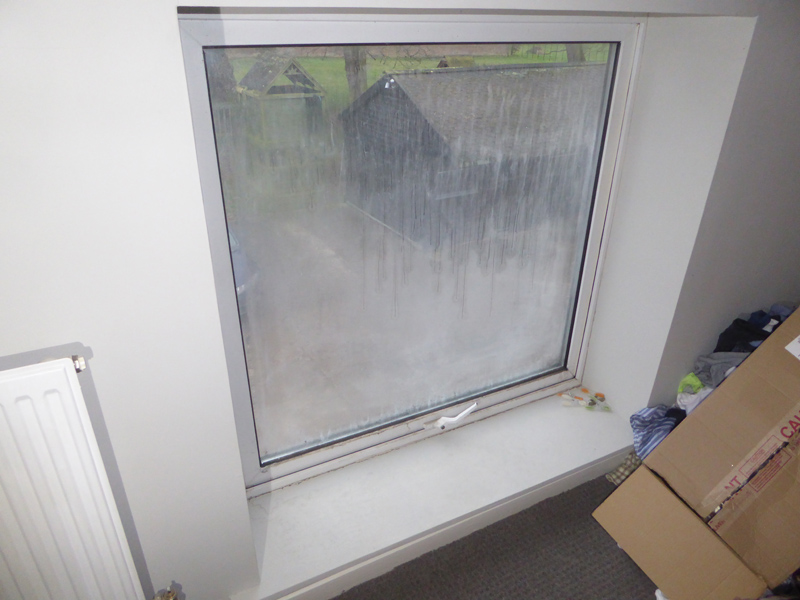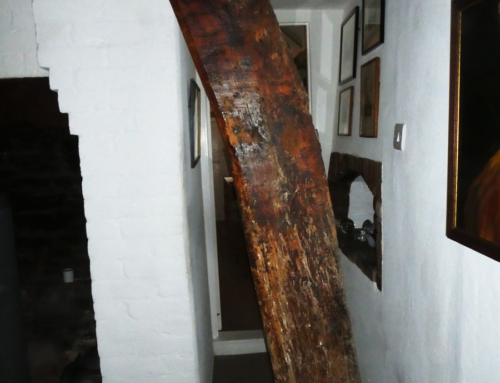Invented in the 1930s, double-glazing reduces heat conduction on the basic principal of heat in, noise out, and is superior to single panes since it reduces downdraughts and upgrades thermal insulation. The seals between the two panes of glass in a sealed double-glazing unit can deteriorate after about 15 to 20 years though, admittedly, this is much more common with older original units. This may only be due to a tiny pin prick hole in a spacer bar silicone sealant, allowing the gas between the panes – usually inert argon – to leak out. Because the pressure inside the glazed sealed units is at a different level to the outside atmosphere, the imbalance sucks in air and allows condensation to form between the panes as misting (see photo). Replacement of the sealed unit is then advisable.
Today, surveyors normally recommend that a client enquires whether any insurance-backed FENSA guarantees are in place (Fenestration Self-Assessment Scheme). This is the conservation of fuel and power document, extended to building regulations in order to cover replacement double-glazed windows and doors in relation to compliance with energy efficiency requirements. This does not apply to conservatories, porches or extensions however.
Metal frames are not favoured as double-glazing surrounds since they are good conductors of heat. It is more common to find uPVC (un-plasticised polyvinyl chloride), timber, or occasionally aluminium, though the latter is restricted to relatively older units. Hermetically sealed units usually have spacer bars in the surround with a gap between the panes of glass of 4mm to 20mm, though 14mm to 16mm is most common and advised. Narrow gaps are more prone to failure due to increased stress levels over what is a smaller area. Glass will crack with impact, or pressure on the unit due to distortion and poor fitting, or thermal stress caused by severe temperature variation.
On old cottages you may well find replacement double glazing has thin strips of lead stuck on the outside of the glass to create a leaded light effect. Unfortunately, the fixing glue on these tends to fail eventually and they fall away. An alternative is the insertion of PVC bars between the glazing to simulate small panes of glass.
Although not as important on leaky old houses, the surveyor will still want to check that double-glazed windows incorporate air vents over the head. This is now mandatory under modern building regulations to ensure a regular flow of air into a property. It is therefore rather a shame that most home owners invariably keep the internal vents closed.
An extract from Surveying at the Coal Face by Brien Walker FRICS






